Over our now more than 25 years of publication, thousands of AV products have passed through the hands of our team. We have been granted the opportunity to review and enjoy wonderful products and we have witnessed some very special technologies emerge. Evaluating all of these products and technologies, with the goal of selecting a precious few to be honored in the SECRETS Hall of Fame, has been a daunting task but one that reacquainted us with the past. The Secrets Vault is an amazing place…..not a speck of dust!
We have selected 15 products (or series of products) and in a few cases technologies for the SECRETS 25th Anniversary Hall of Fame. Each of the awards is accompanied by a discussion about our selection and in several cases links to corresponding reviews or technical articles. In the end, this exercise was not about simply picking our favorite pieces of equipment that we’ve reviewed over the past quarter-century. That would have resulted in a much longer list and, frankly, would have been a much easier task. This was about finding seminal examples of audio and video product (or technology) that set the bar in such a way that they became touchstones for what was to follow. After poring through 25 years’ worth of archives and after much deliberation, the staff here at Secrets agree that these 15 winners had the most significant and lasting impact on the home theater and high-fidelity landscape. We hope you enjoy reading about both our choices and the rationale behind their inclusion in this list.
We now present to you the Secrets 25th Anniversary Hall of Fame Awards!
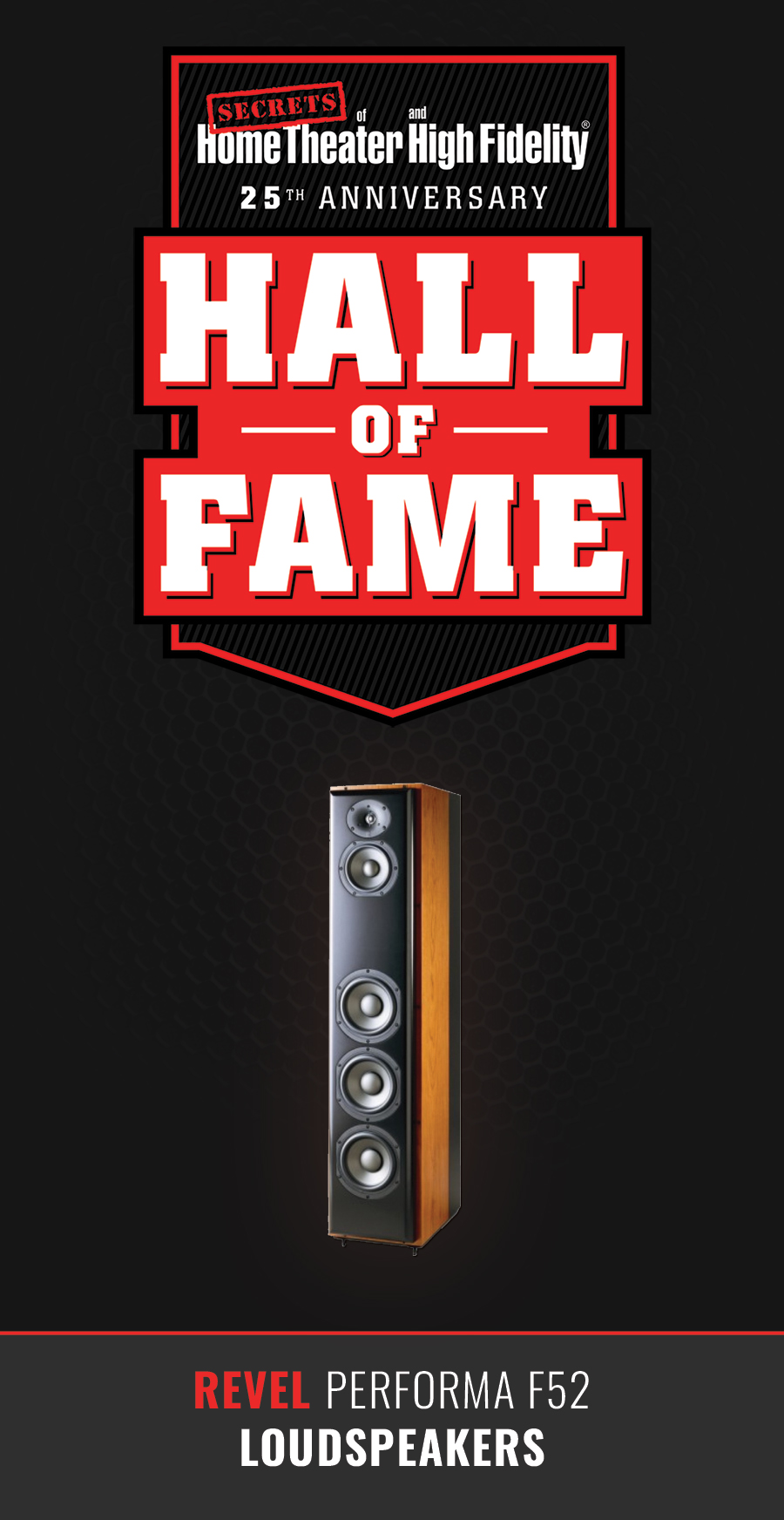
Introduced in 2006, Revel finally made full use of Dr. Floyd Toole’s design methodology. The result was the F52 floor-standing loudspeakers at $6500. The Harman spin curves, provided privately by Revel, show that the F52s performance has only been slightly exceeded by any speaker that followed.
(Editor’s Note: Spin curves or “Spin-O-Rama” measurements are a set of 6 acoustic measurements (On-Axis Response, Listening Window, Early Reflections, Total Sound Power, Total Sound Power Directivity Index, and Early Reflections Directivity Index) that, when viewed together, help to characterize a loudspeaker’s overall performance. The name is derived from the measurement process which consists of rotating a speaker a full 360 degrees on both it’s vertical and horizontal axis within an anechoic chamber. A frequency response measurement of the speaker is taken at every 10-degrees of travel along both axis of rotation and the spin curves are calculated from all the resulting data. This measurement process was developed by Harman and was adopted by the Consumer Technology Association and the American National Standards Institute as the ANSI/CTA-2034-A standard.)
In 2006, Sumit Chawla reviewed the F52 speakers and in 2008 he reviewed the Revel Ultima2 Studio speakers. Sumit found the F52 speaker performance to be very close to the $16,000 Revel Ultima2 Studio speakers.
In 2010 Chris Eberle reviewed the Performa F52’s in a surround sound configuration.
Reviews and commentary:
Revel F52 Speaker Review and Measurements – 2006, Sumit Chawla and John Johnson
“In two-channel mode, the F52s are delightful. They are delicate in the treble, lush in the midrange, and bold in the bass. With the waveguide, the tweeter and midrange blend into a single unit. I am going to miss them, particularly their treble reproduction”.
Revel Ultima2 Studio Speakers – review comparison to F52 – 2008, Sumit Chawla
“This price will no doubt limit their market penetration. For buyers for whom this system (Ultima Studio 2) may be out of reach, there is still an excellent alternative: a system built around the Performa F52s.”
Performa F52 Surround Sound System Review – 2010, Chris Eberle
“My time with the Performa (F52) was very pleasurable.”

The Paradigm Reference Signature S8 speaker was introduced in 2004 with an MSRP of $5400.
Dr. Toole may have left the NRC in Canada for the US in 1991 but some of his team stayed in the land of the Maple Leaf and got to the proverbial finish line first. Up to this point, Paradigm had traditionally focused on value-oriented speakers but in 2004 they produced a cost-no-object loudspeaker called the Reference Signature 8.
Note from Dr. David A Rich: “I had access to only limited NRC anechoic chamber results. These show performance consistent with NRC goals despite the large 7-inch midrange, the small waveguide on the tweeter and lower order crossovers. The listening window is free of resonance with a desirable slight monotonic downward slope.” The rounded cabinet would influence the rest of the industry.
The V3 version was released in 2011 with a price of $8600. Woofer drivers were modified to achieve a lower extension.
Production of the S8’s continued until 2016.
Reviews and Commentary:
Paradigm Signature S8 Speakers – 2004, Yongki Go
“In fact, when you consider that many speakers in the high-end world carry stratospheric price tags, which can be many times higher than the S8 price, then the word “value” is written all over the S8 speakers… Highly recommended!”
Paradigm Reference Signature S8v2 Surround Sound System – 2008, John Johnson
“The Paradigm Reference Signature S8v2, C5v2, ADP3v2, and Servo-Sub represent state of the art in a surround sound speaker package.”
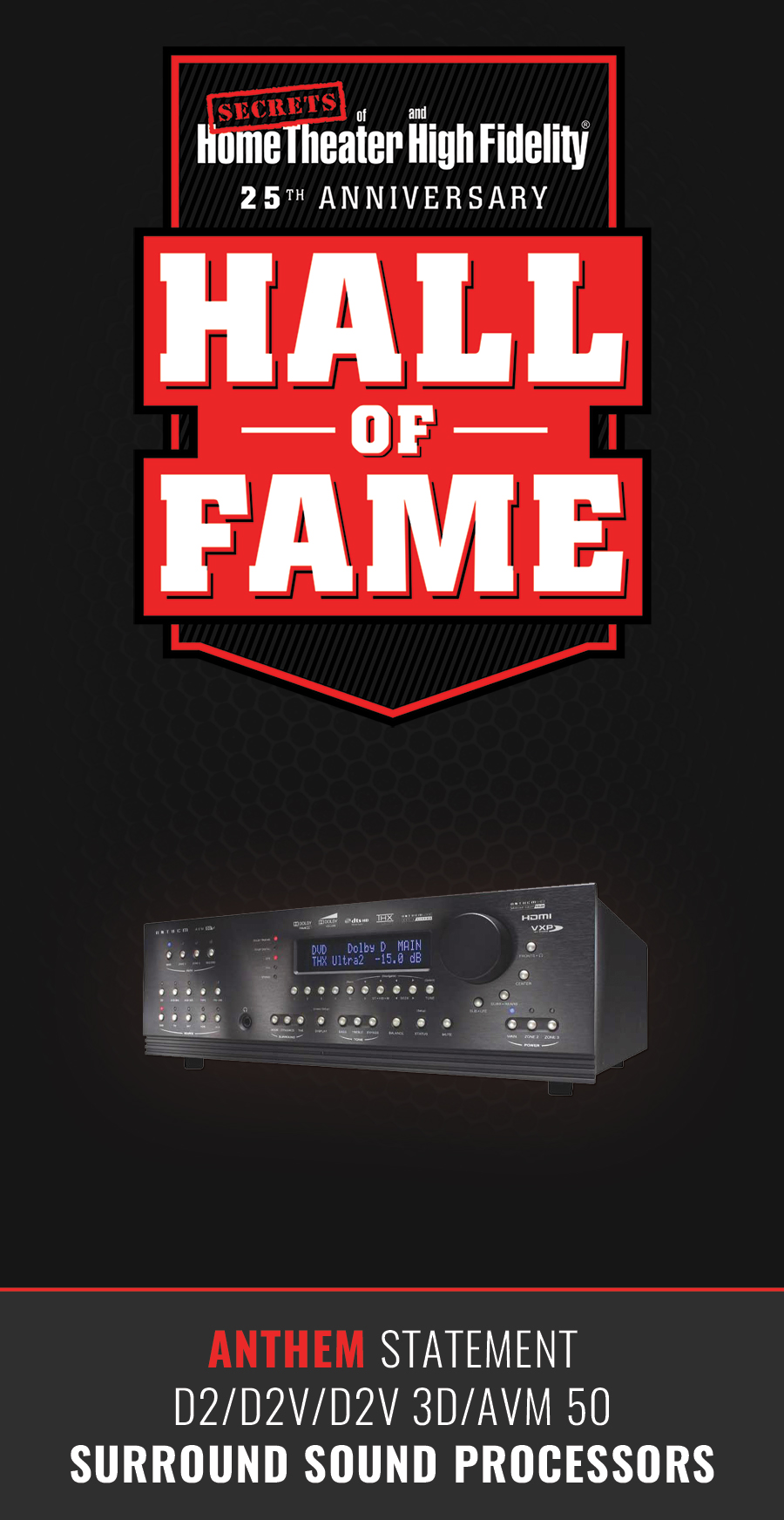
This HDMI SSP (Surround Sound Processor) may have been one of the first HDMI 1.1 units coupled with a state-of-the-art video processor. The price of the D2 was between $6700 and $7500 and the AVM 50v $5400.
The ARC room correction system is still state of the art (we still wait for DIRAC to come out with something that properly supports subwoofers). See John Johnson’s assessment of ARC (2008).
Impeccable analog performance is also still state-of-the-art today per John’s measurements in the analog domain (2009).
The digital domain is solid, marred only by a code error in the ASRC.
The cheaper AVM 50v was almost identical with the ASRC absent, lower quality ADCs, DACs and a less flashy front panel at $2000 less.
The DAC in the 2019 Anthem STR stereo products produces about the same performance.
Reviews and Commentary:
Anthem Statement D2 – 2006, Kris Deering
“The video processor is outstanding and better than the vast majority of video processors I’ve ever evaluated. The Anthem Statement D2 will continue to be my reference Audio/Video processor and I could not recommend a product more.”
Anthem Statement D2v – ARC 1.0 – 2008, John E. Johnson, Jr.
“ARC is a very scary product. If you are one of those who insist on having the best sound, and you experience ARC, especially if you can do so with your existing system, one of two things will happen: Either you will buy a D2 with ARC, or you will stop listening to your existing system knowing just how much better it would be with ARC.”
Anthem AVM50v – 2009, Brian Florian
“There are precious few pieces of consumer audio/video equipment which are as safe a bet as the Anthems. In a phrase, “Buy with confidence”.”
Anthem AVM50v –D2V – 2009, Chris Eberle and John Johnson (AP measurements)
“Factoring in the extensive video capabilities of the D2v, it would be difficult to find another product that offers so much quality and so much flexibility.”
ARC 1.3 (Part 1, Part 2) – 2013, David A. Rich
“Before the Anthem ARC, I had never heard a system with a subwoofer that had not been degraded in the crossover area. To me, this degradation from other room correction systems I have had access to was far more significant than the extension of the bottom end.
I also listened to numerous speakers, full-range, and found the result to be the best I have achieved using an electrical room correction system.”
Anthem Statement D2v 3D – 2014, Robert Kozel
“The Anthem Statement D2v 3D continues to be a reference quality component that delivers outstanding audio performance. Its feature set is unique among the high-end processors since it contains a superb video processor and Anthem Room Correction. While the overall audio design is over ten years old, the quality of that design has stood the test of time, which is something that Anthem should definitely be proud of.”
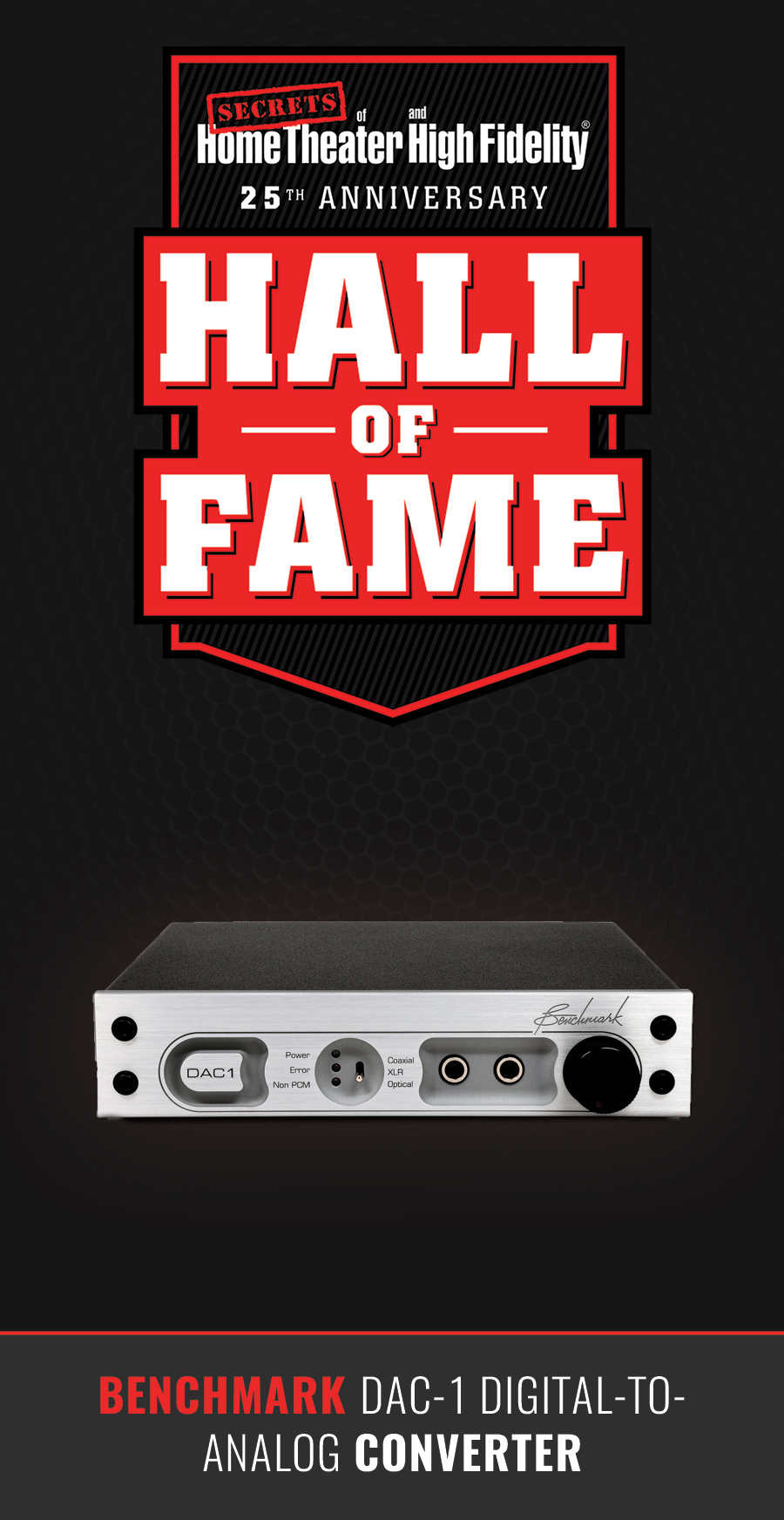
At $850, the Benchmark DAC 1 outperformed all that had come before it by a significant margin, some of the competition was priced an order of magnitude higher. It did what the companies name says: provided the Benchmark.
The DAC-1 was a product far ahead of its time. Fully ready for high resolution but finding a way to feed it a high-resolution source in 2003 was difficult. SACD’s were copy-protected to prevent a SPDIF output. DVD-A came and went fast.
The follow-on Benchmark product reviews are not listed here. They are different products with different parts and capabilities. All are state-of-the-art measuring devices. Benchmark has never relinquished that but prices have more than doubled. We would have to wait more than 10 years for high-speed internet downloads and USB to make the purchase of a Benchmark product a necessity.

The OPPO DV-981HD and DV-980H Universal DVD Players are the products that established OPPO as a respected brand.
The units are basically the same and were in the $200 price range. These are the first HDMI equipped DVD players that played high-resolution music discs (SACD and DVD-A). They provided the first solution for a digital transmission of the SACD DSD stream between the player and AVR that was not proprietary. Before the OPPOs, a special digital cable was needed, that worked only between components from the same company, and typically only found in top-of-the-line models.
So many demos of multichannel music flopped because the analog cables were all mixed up. The center channel wound up in the subwoofer, the left-front channel wound up in the right rear, etc. That ended with the arrival of OPPO players.
OPPO DV 981 HD – 2007, Matthew Abel
“The simple fact is that one can get an OPPO DV-981HD today and enjoy a wealth of high-res multi-channel music, by using it as a DVD-A and SACD digital transport, with your receiver’s or processor’s DACs doing the decoding, and exploiting all of the digital room correction and bass management technologies modern receiver/processors offer. I was very happy with the performance of the OPPO DV-981HD and I’m keeping it as my main DVD-V, DVD-Audio, and SACD player. For $229, it is a no-brainer purchase.”
OPPO DV-980H – 2008, Chris Groppi
The experienced OPPO gained in the development of the DV-981HD and DV-980H, including initiating a wide-ranging beta-test program among the audio and videophile community, set the stage for continually more impressive products with performance, quality and feature envelopes that many of the established companies weren’t even considering.
Over the years OPPO developed a tight relationship with its fanbase. The company squarely knew its target audience and listened to what they wanted, making other manufacturers seem a little stodgy by comparison. All the players that followed: the OPPO BDP-83/SE, BDP-93/95, BDP-103/105 and UDP-203/205 were each groundbreaking disc/media players to one degree or another. Every model successively became the standard for discerning audio and videophiles. But it was the DV-981HD and DV-980H that got the ball rolling.
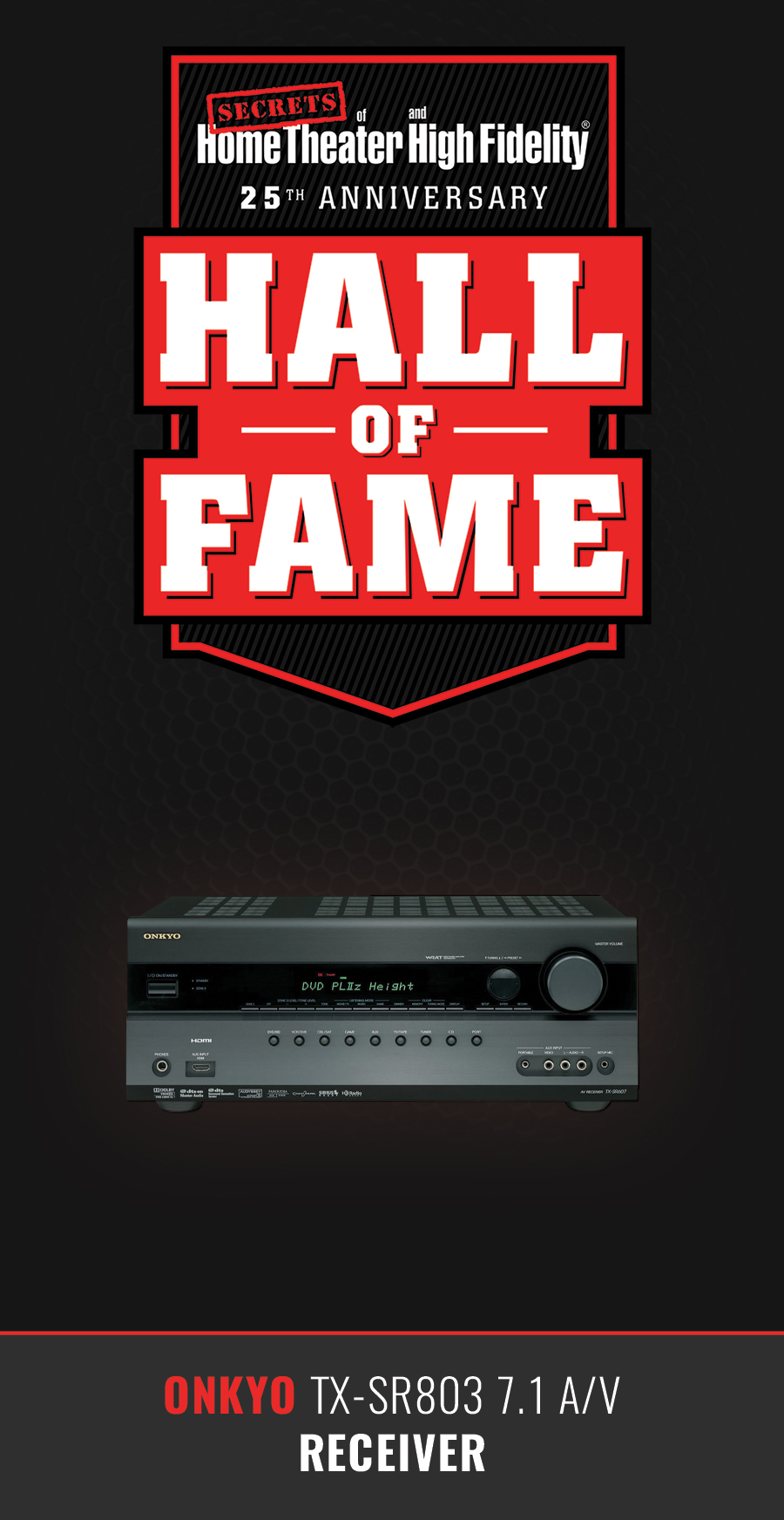
One of the better early low-cost HDMI A/V receivers.
“The bottom line is this: you need to pay quite a bit more money to dramatically improve upon the performance of the TX-SR607. That is high praise indeed and if $600 is within your receiver budget, the Onkyo TX-SR607 is tough to beat.”
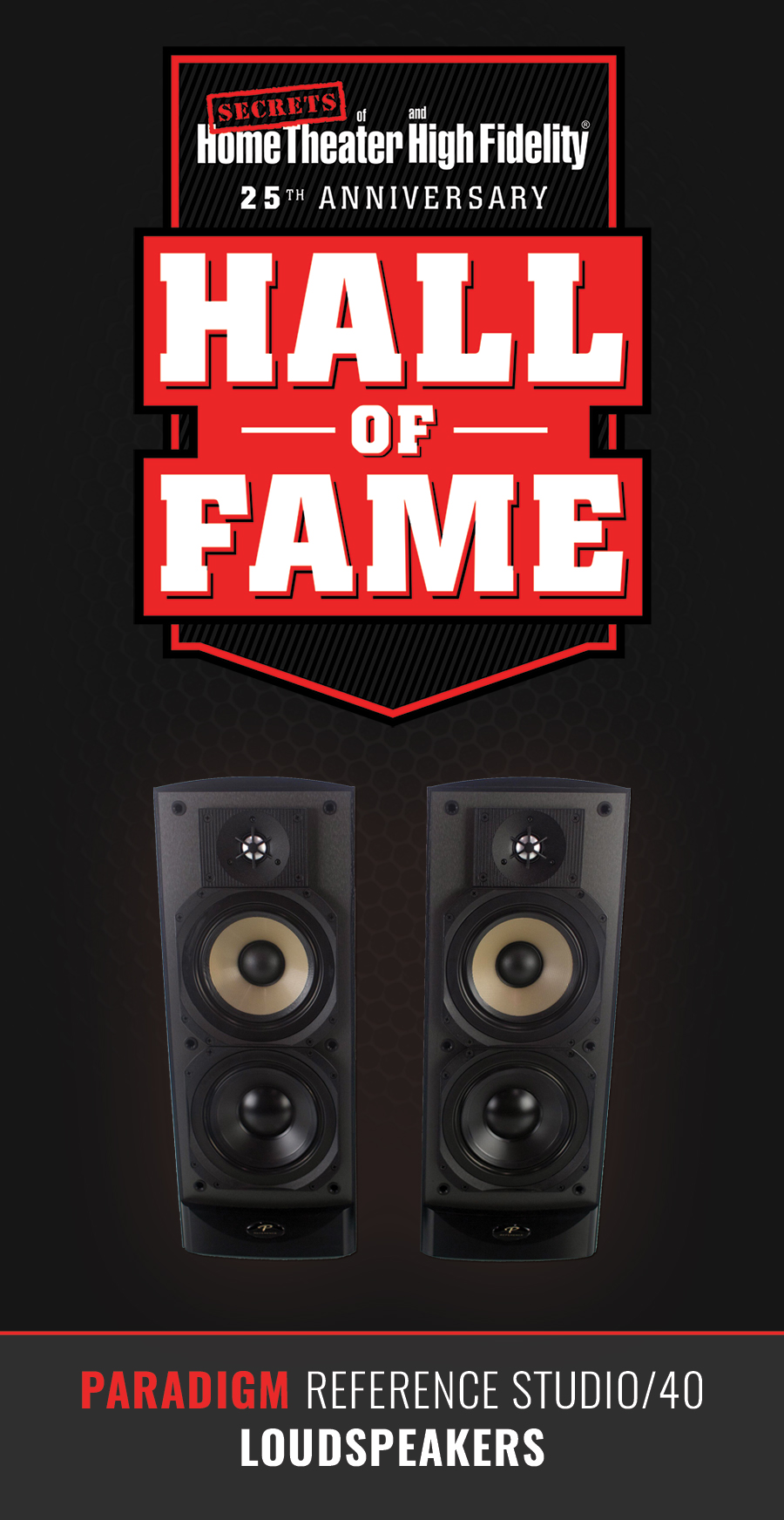
The Paradigm Reference Series Speakers Studio/40 + center/rear and subwoofer were priced at $900 upon release. The developments of the NRC Canada research transferred to a company (Paradigm) that produced fully realized products at low prices. Paradigm even made a copy of the huge NRC anechoic chamber. Paradigm’s literature was a translation of the NRC research papers into words the consumer could understand. No wonder the company was growing like a weed in the mid-late 90s.
“I find myself wanting to rave just a little. I can tell you that these speakers are what Paradigm wants you to know that they are: An incredible value. I don’t make a lot of money, and for what means I do have, the competition is fierce: gas, mortgage, food, and so on. Anything anyone can do to bring high-performance within my reach deserves special recognition, and the Reference speakers do just that. I urge you to put them on your list of models to audition.”
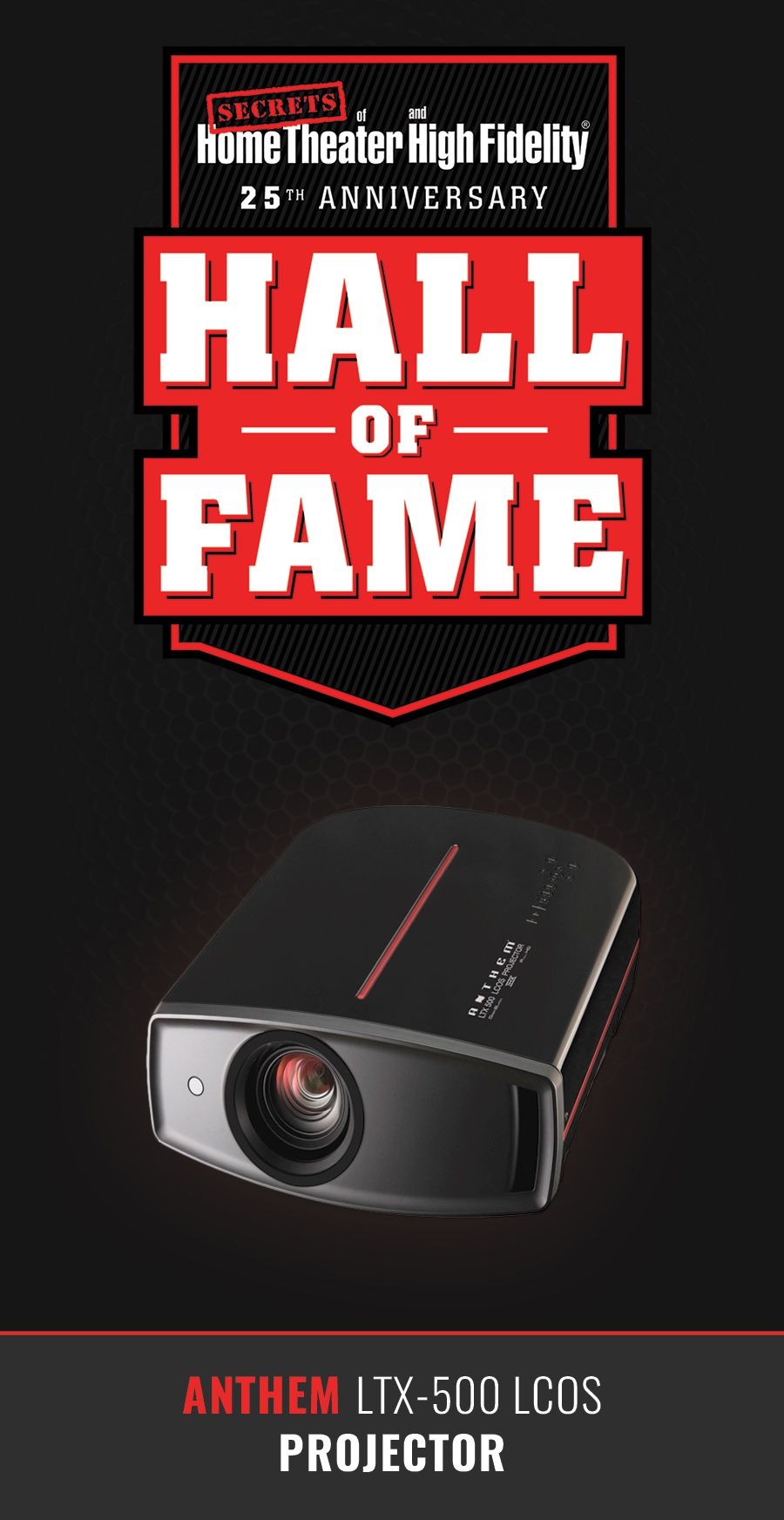
In 2009, Anthem offered its first, and to date only, front projection display, the LTX-500. Aside from its exterior badging, it was identical to the JVC DLA-RS20 LCoS Projector. Released in the early days of 1080p resolution, it represented the pinnacle of performance for home theater displays designed for small and medium spaces. At a time when the best projectors could muster perhaps 1000:1 contrast, the LTX-500 boasted 50,000:1 without the use of an auto-iris.
Just how good does it look? I reviewed one in 2009 and it never left my possession. It has been my number one reference projector for nearly 11 years. It was the first review I ever wrote and even though I’ve worked with many projectors since then, I’ve never been compelled to replace it. OK, there was one exception, JVC’s DLA-RS640. That display almost stayed with me, but it didn’t represent a great enough upgrade to warrant its $8000 purchase price.

This subwoofer is a reference for all other subs out there. Unusual in its ability to operate either off a standard 120 Volt electrical service or a dedicated 240 Volt AC service, its amplifier will produce 3,000 watts RMS in 120 Volt mode and a whopping 4,500 watts RMS (9,000 watts peak) in 240 Volt mode. All of this audio power is delivered to six 10” drivers, each of which has a 25-pound magnet. They have very low distortion, even at 10 Hz and pushing high dB. When I played two of these subs in my test lab, my neighbor three houses up from me on our street told me that she could feel the ground trembling in her yard.

A fabulous four-chassis tube preamplifier, this model set standards for tube preamplifier performance. Each channel of the preamp has four 6H30 dual triodes operating in Pure Class A bias, meaning that each channel has eight triodes delivering the music. Also, each channel has its own separate power supply in its own separate chassis. It has been updated, but the original version nevertheless still is a unit worth pursuing if you can find one.

This power amplifier takes a much different approach to distortion. It was designed totally with the staff listening to the various versions and saying, “this one sounds the best.” It produces significant distortion, but the distortion is very appealing, and the amplifier does not produce it from stress, but rather, the circuit is specifically oriented for it. Each channel is a two-chassis monoblock, weighing 300 pounds in total. Each channel produces 300 watts of Pure Class A sound. Extremely unusual, and really marvelous.
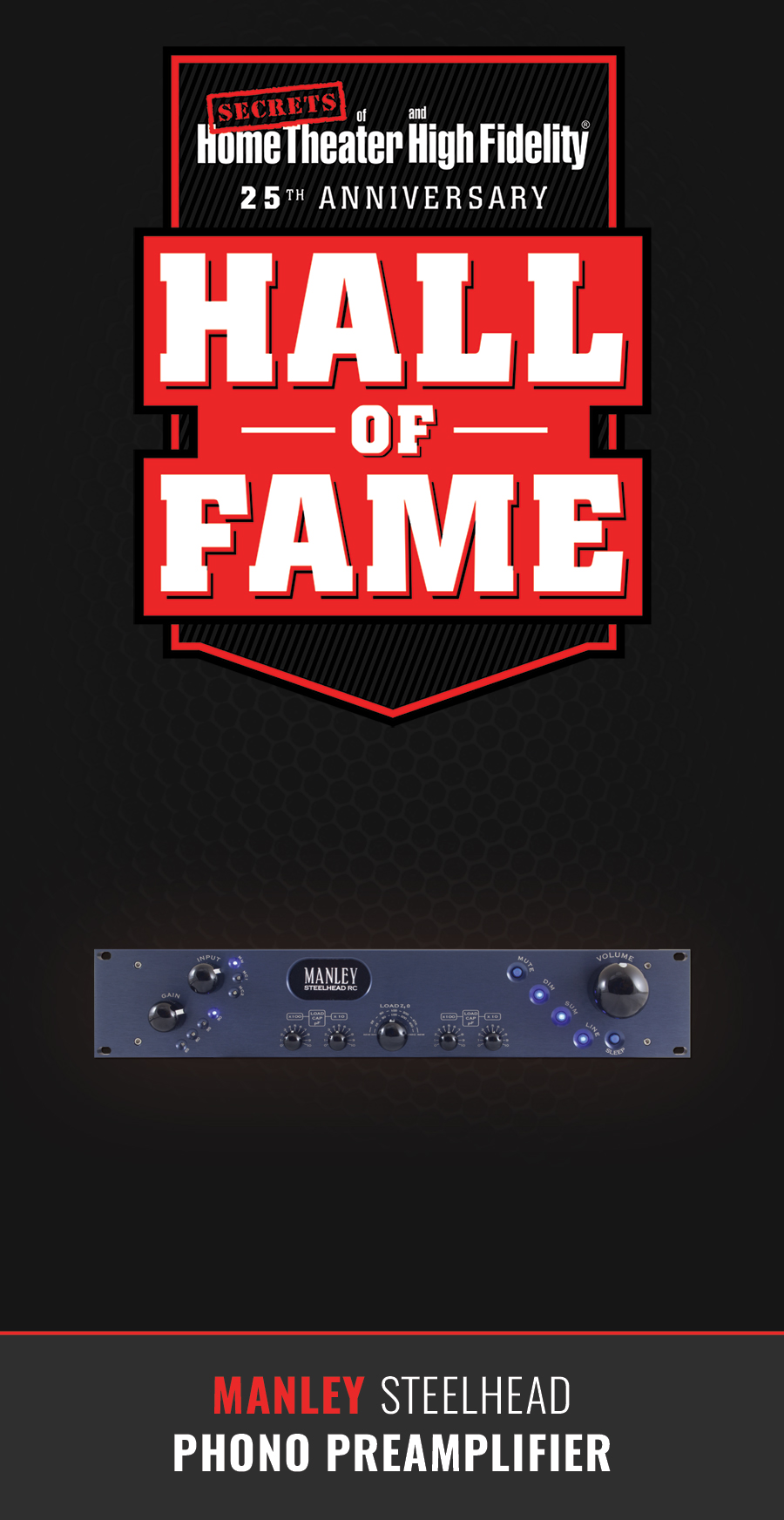
All tube, pure Class A bias.
This phono preamplifier (also called a phono stage) has been a standard offer from Manley Labs for many years. That is a testament to its popularity with audiophiles.
It operates in Pure Class A bias, and one of its outstanding features is that it produces significant amounts of 2nd order harmonics. Such harmonics are also produced by the phono cartridge, which are part of the results shown in the review. Noise contributes to the THD+N measurement, so the harmonic distortion itself is about 1%.
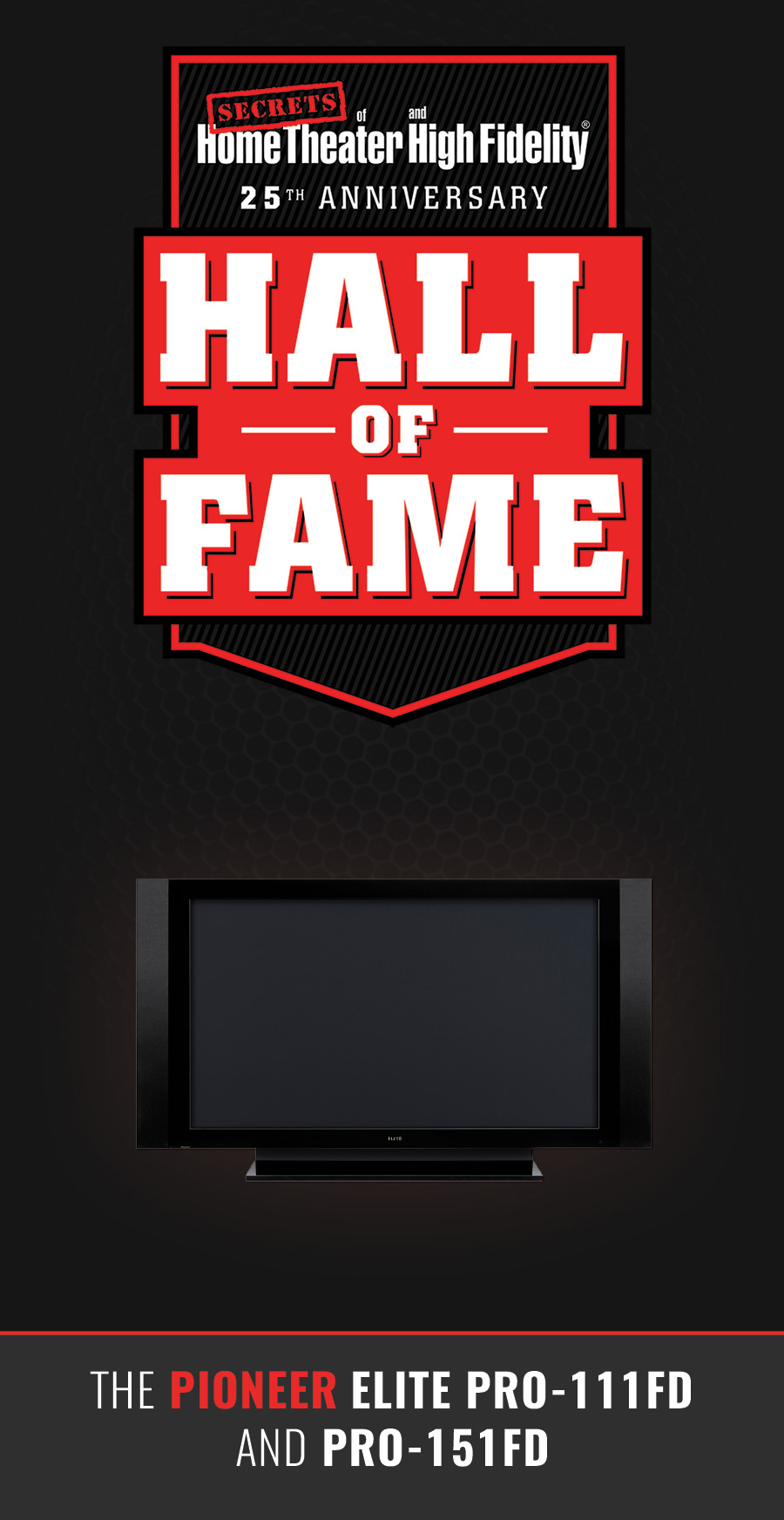
The Pioneer Elite PRO-111FD and PRO-151FD were never reviewed by Secrets but the PRO-111, a 50-inch model, is still my reference flat panel. It also is a 2009 product which sadly, was its last year of production. In fact, that was the year Pioneer canceled its Elite plasma line and dropped the price of its left-over TVs to reasonable levels. Though the final version of the Elite was arguably the best TV in the world at the time, it sold for the eye-watering price of $4500 in the 50-inch version which was a big ask in a market where a 50-inch LCD could be had for $1500.
Not only was it the king of contrast (and still is today when compared to any LCD), it had special ISF modes accessed by software that could bring it to a highly accurate standard while peaking at 175 nits and delivering an honest 50,000:1 contrast ratio.
It is unfortunate that plasma is no longer with us. Samsung was the last company to market them and that era ended in 2014. But I’ll watch my Pioneer until it works no more. Plasma is dead, long live plasma!


